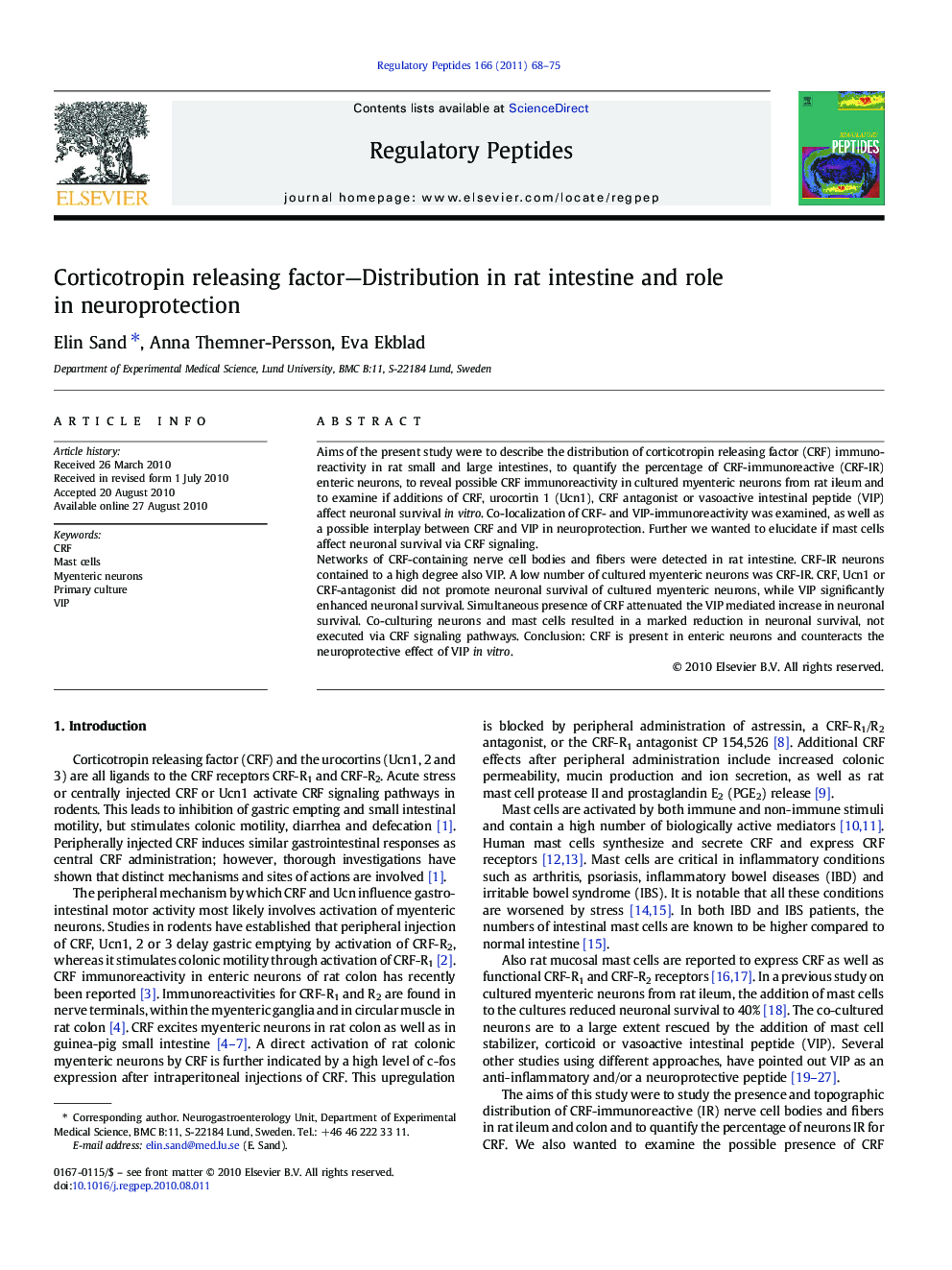| کد مقاله | کد نشریه | سال انتشار | مقاله انگلیسی | نسخه تمام متن |
|---|---|---|---|---|
| 2022616 | 1542419 | 2011 | 8 صفحه PDF | دانلود رایگان |

Aims of the present study were to describe the distribution of corticotropin releasing factor (CRF) immunoreactivity in rat small and large intestines, to quantify the percentage of CRF-immunoreactive (CRF-IR) enteric neurons, to reveal possible CRF immunoreactivity in cultured myenteric neurons from rat ileum and to examine if additions of CRF, urocortin 1 (Ucn1), CRF antagonist or vasoactive intestinal peptide (VIP) affect neuronal survival in vitro. Co-localization of CRF- and VIP-immunoreactivity was examined, as well as a possible interplay between CRF and VIP in neuroprotection. Further we wanted to elucidate if mast cells affect neuronal survival via CRF signaling.Networks of CRF-containing nerve cell bodies and fibers were detected in rat intestine. CRF-IR neurons contained to a high degree also VIP. A low number of cultured myenteric neurons was CRF-IR. CRF, Ucn1 or CRF-antagonist did not promote neuronal survival of cultured myenteric neurons, while VIP significantly enhanced neuronal survival. Simultaneous presence of CRF attenuated the VIP mediated increase in neuronal survival. Co-culturing neurons and mast cells resulted in a marked reduction in neuronal survival, not executed via CRF signaling pathways. Conclusion: CRF is present in enteric neurons and counteracts the neuroprotective effect of VIP in vitro.
Research Highlights
► CRF is found in enteric neurons, together with VIP, in rat intestine.
► Primary culturing of rat myenteric neurons reduces CRF expression.
► CRF counteracts VIP-induced neuroprotection of myenteric neurons.
► Mast cell-induced reduction of neuronal survival is not executed via CRF signaling.
Journal: Regulatory Peptides - Volume 166, Issues 1–3, 17 January 2011, Pages 68–75